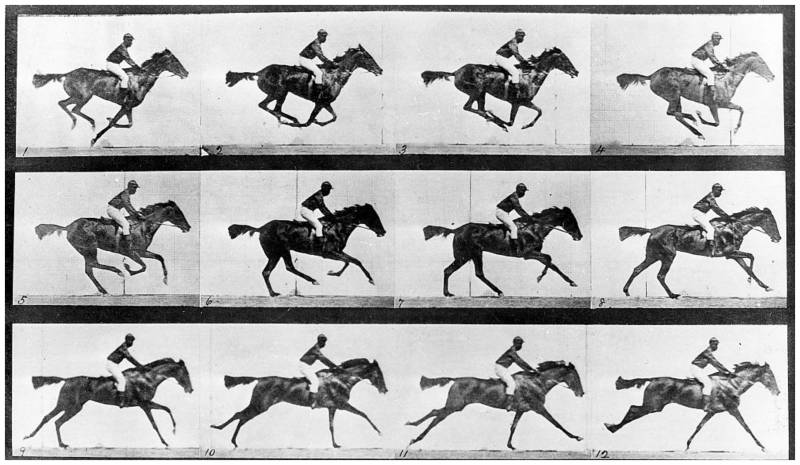The Bay Area’s fascination with technology didn’t start with Silicon Valley. In the late 19th century, San Franciscan Eadweard Muybridge, an eccentric, misanthropic murderer became the first person to capture motion on film. At the time, Muybridge was a well-known photographer whose moody images of Yosemite Valley stood out from the conventional landscape photographs of the time. Because Muybridge was known as an inventor and innovator, Leland Stanford approached him about trying to photograph his horse in motion. Those images of a horse galloping at speed revolutionized photography. We’ll talk about Muybridge and how his inventiveness with camera and film laid the groundwork for how we see and record the world today.
The Man Who Captured Motion on Film

Photograph by Edweard James Muybridge (1830-1904), British-American photographer and pioneer of animal sequence photography. Muybridge photographed a horse using cameras with shutters set to a speed of 1/500 second and then released by threads broken by the horse or by clockwork. Thus, in 1877, his series of still photographs showed that a trotting horse lifts all its hooves off the ground at the same time. This led to studies of movement in humans and in 1880 he devised the zoopraxiscope, a precursor of cinematography. (Science & Society Picture Library via Getty Images)
Guests:
Rebecca Solnit, author & essayist - Solnit is the author of "River of Shadows: Eadweard Muybridge and the Technological Wild West" as well as "Orwell's Roses," "Recollection of My Nonexistence," "Whose Story is This: Old Conflicts, New Chapters," and "Drowned River: The Death and Rebirth of Glen Canyon on the Colorado," among other works.
Marc A. Shaffer, Director, "Exposing Muybridge"
Sponsored